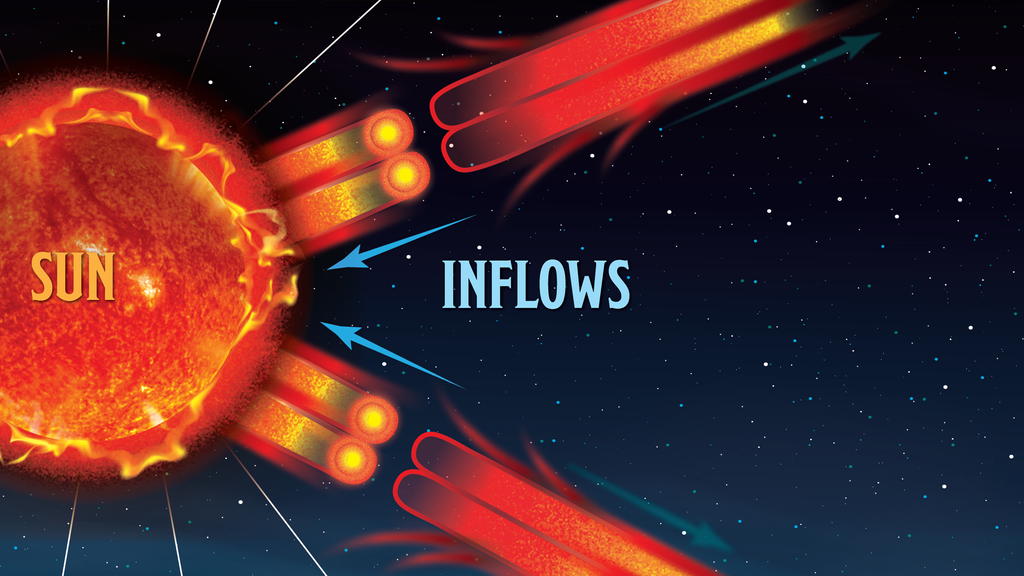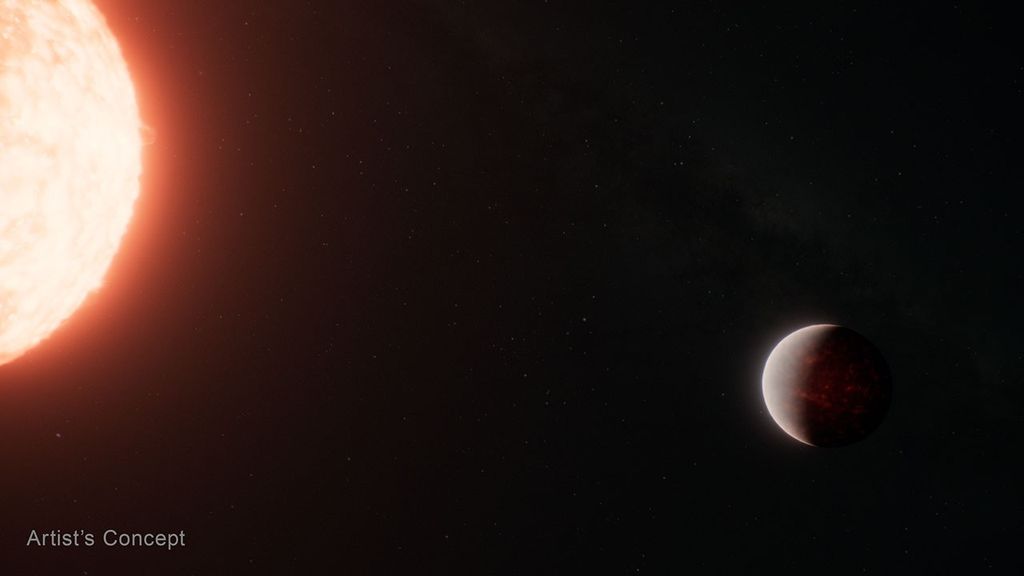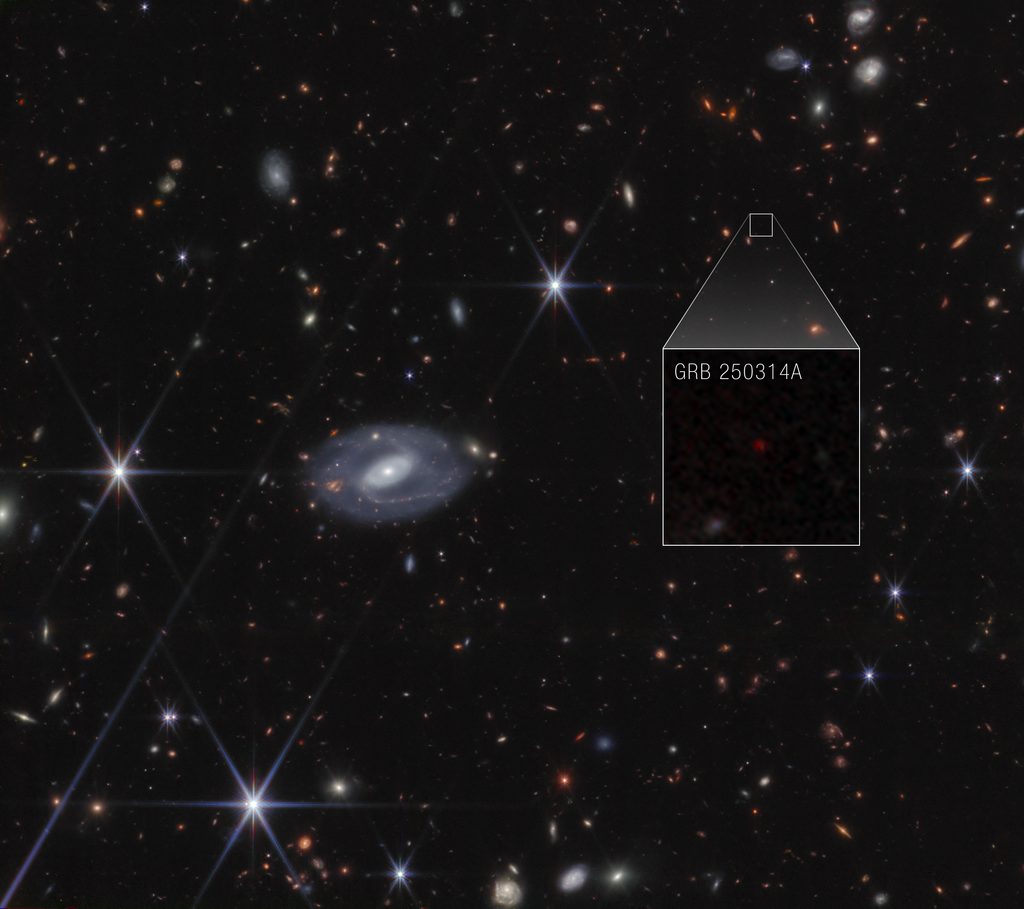1 min read
Combined Deep View of Infrared and Visible Light Galaxies

This narrow, deep view of the universe reveals a plethora of galaxies (reaching fainter than 28th magnitude), as seen in visible and infrared light by NASA's Hubble Space Telescope. The reddish galaxies are glowing in infrared light, and the bluish galaxies are glowing in visible light. Several distinctive types of galaxies can be seen in these views: blue dwarf galaxies, disk galaxies, and very red elliptical galaxies. A bright, nearby face-on spiral galaxy appears at upper right. Some of the brightest objects in the field are foreground stars in the halo of our own Milky Way galaxy. By combining views in infrared light and visible light astronomers have a better idea of the shapes of galaxies in the remote universe, and of the fraction which are old or dust-obscured at early epochs.
Galaxies could appear bright in the infrared (and thus red in this picture) for several reasons. They might be dusty, or contain old stars, or are at a very great distance. Several of the red galaxies in this field have the colors and the smooth, symmetric shapes expected for old elliptical galaxies. The existence of such objects in the early universe and their numbers can set important limits on the era when the earliest galaxies assembled and formed most of their stars. In general, the image shows that the shapes and sizes of most faint galaxies are similar in infrared and visible light, suggesting that younger and older stars within distant galaxies are well mixed and that dust is not completely distorting impressions of distant objects.
The image was taken in October 1998 as part of the Hubble Deep Field South imaging campaign. It is in a small patch of sky in the constellation Tucana. The false-color image is a composite of separate images taken with the NICMOS and STIS cameras on board the Hubble Space Telescope. The red and green colors correspond to infrared wavelengths of 1.6 and 1.1 microns, respectively. The blue color corresponds to the STIS view that covers the full range of visible wavelengths.
About the Object
- R.A. PositionR.A. PositionRight ascension – analogous to longitude – is one component of an object's position.22h 32m 55.0s
- Dec. PositionDec. PositionDeclination – analogous to latitude – is one component of an object's position.-60° 33' 10.0"
- Object NameObject NameA name or catalog number that astronomers use to identify an astronomical object.HDF-S
- Release DateJanuary 7, 1999
- Science ReleaseCombined Deep View of Infrared and Visible Light Galaxies
- Credit
Share
Details
Last Updated
Aug 17, 2025
Contact
Media
Claire Andreoli
NASA’s Goddard Space Flight Center
Greenbelt, Maryland
claire.andreoli@nasa.gov





























